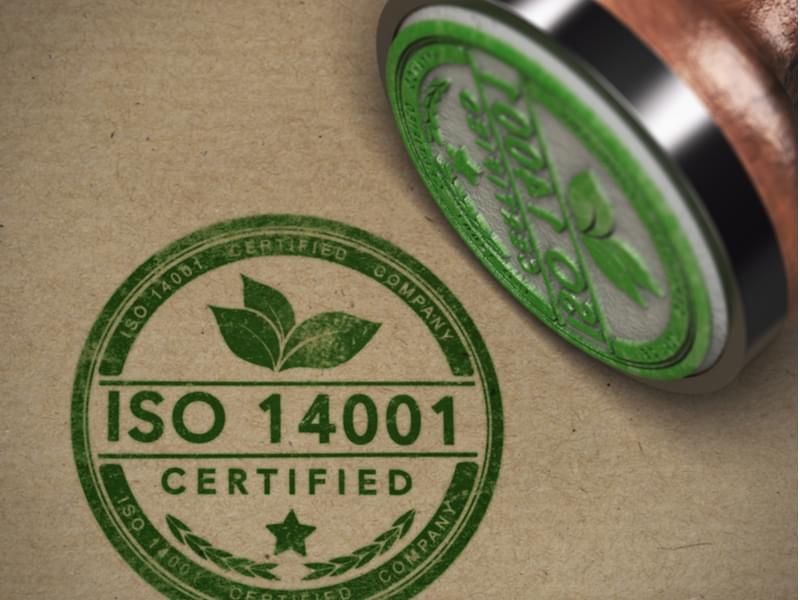ISO 14001, BMW, and the Automotive Industry
Discover how BMW continues to be proactive in requiring its suppliers to maintain the same quality standards it does, including ISO 14001 and ISO 45001.

The health of our environment affects everyone, and when it's in jeopardy, it takes everybody doing their part to create lasting and meaningful change. This includes organizations, both large and small, that operate within and provide jobs to a community. Certification to the ISO 14001:2015 standard is a great way for businesses to back up their commitment to the people whom they employ, those who live in the surrounding area and the planet as a whole. Read on to learn about ISO 14001 requirements.
An ISO 14001:2015-based environmental management system (EMS) helps organizations map out a framework of processes and procedures to support their environmental performance goals and meet compliance obligations. It can help companies establish a positive relationship with their clients and the surrounding community. Applicable to businesses of any size, ISO 14001 can be tailored to your company's needs but must account for all legal requirements and environmental stipulations for your particular industry.
Preventing catastrophes and negative outcomes as they pertain to the environment — or at the very least lessening their likelihood — is one of business's greatest challenges. A company pursuing certification for ISO 14001 acknowledges this and signals to its customers that the organization cares enough to reduce its environmental impact. This can help foster stronger client relationships and generate positive public relations. It can also increase customer loyalty, leading to new business. In addition to these benefits, ISO 14001:2015 certification may create cost savings for a company by reducing potential incidents through structured procedures, lessening liability costs and lowering insurance premiums. If an organization chooses, it can pass all or part of these savings to customers.
Before considering ISO 14001 certification, a company must implement an EMS that adheres to the requirements in the ISO 14001 standard. Beginning with the legal requirements for its industry and how they relate to building an EMS, a distributor must flesh out its environmental policy, including long-term objectives. It must also map out the processes and procedures it needs to operate within the environmental scope. Documentation and accurate record keeping are crucial as a company builds out its EMS. This includes a period during which the organization must operate with its newly formed EMS in place to collect the appropriate data needed for certification.
The ISO 14001 standard has seven key sections that outline the most important requirements for a company to achieve ISO 14001:2015 certification. Below is a quick reference to these key sections and some information regarding mandatory procedures:
Context — A process is required to identify internal/external issues, interested parties and the scope of the EMS needed for ISO 14001 certification.
Leadership — This outlines leadership's responsibilities and commitment to implementing an EMS. This includes ISO 14001 definitions of the overall environmental policy as well as the assignment of crucial roles in the system.
Planning — A documented plan for ongoing functions, risks, opportunities and objectives must be in place, as well as an assessment of how the company's procedures interact with the environment and legal requirements.
Support — Evidence is needed that management has provided resources, including ISO 14001 competence training, communication options and document control processes.
Operation — Environmental controls must be in place within the procedures, and there must be emergency response plans.
Performance Evaluation — A process is required to monitor the effectiveness of an EMS. This includes management reviews and internal audits to assess compliance.
Improvement — A plan to improve an organization's EMS must be in place.
If your company is already certified to ISO 14001 but your team is unhappy with the level of customer service provided by your certification body, Smithers can help you with a certification transfer. The Smithers Quality Assessments Division works hard to provide exceptional customer service and will coordinate with your business to make the certification transfer process as quick and painless as possible.
You can transfer your ISO 14001:2015 certification at any stage of your three-year cycle, and it doesn't require a transfer audit. But be sure to check with your certification body before transferring to understand what audit cancellation fees may apply. Typically, if you transfer a minimum of 60 to 90 days before your next scheduled ISO 14001 audit, you can avoid paying audit cancellation fees.
Take the first steps in getting certification for ISO 14001 — request a quote from our team of experts or visit our services page to learn more about this standard.